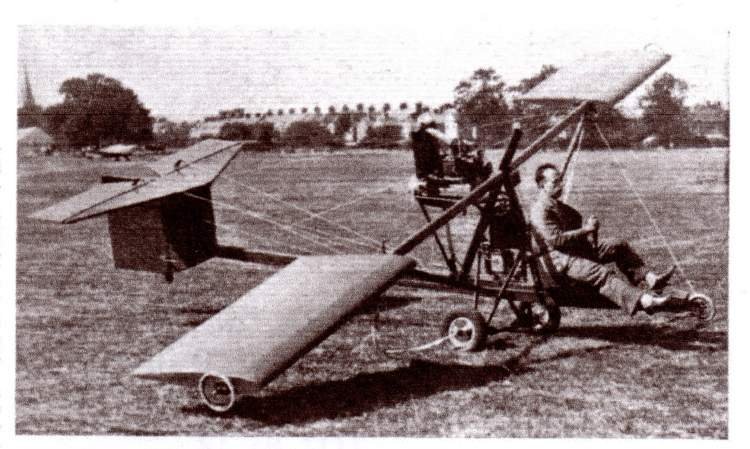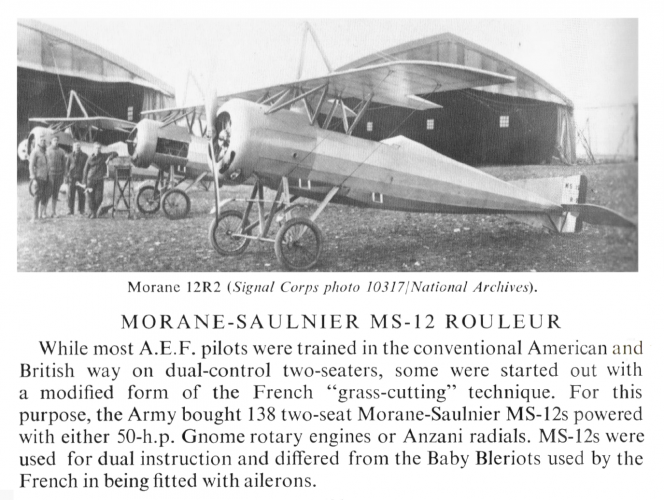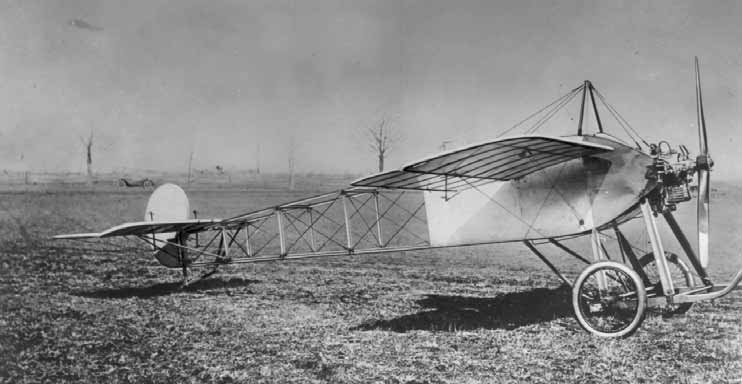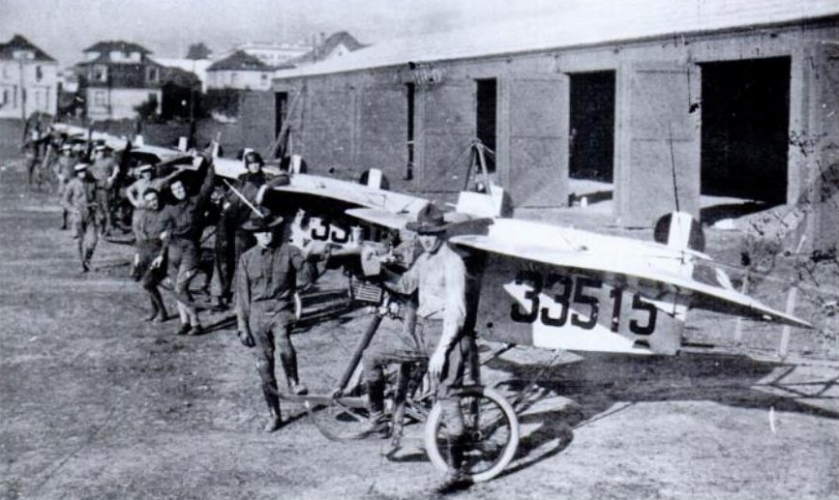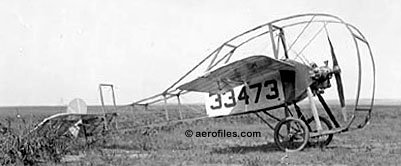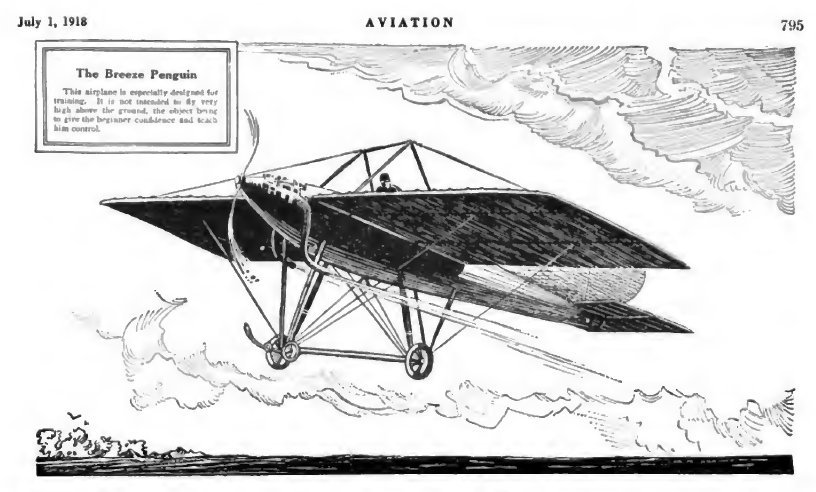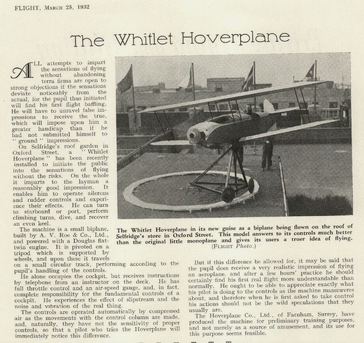- Joined
- 25 June 2009
- Messages
- 14,703
- Reaction score
- 5,962
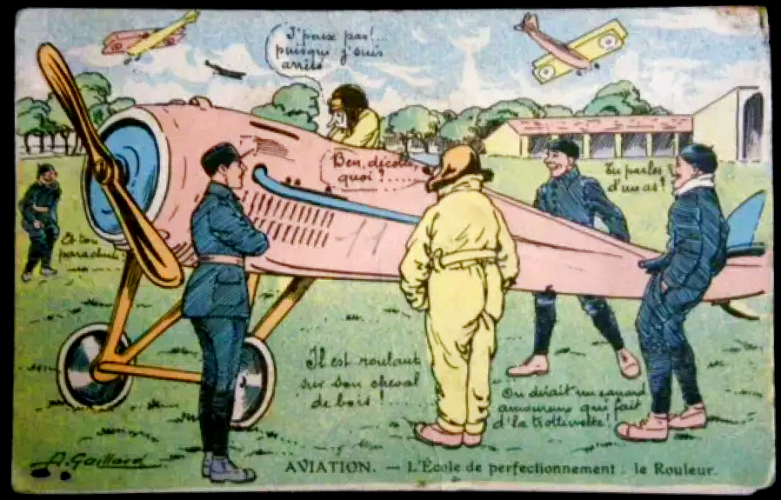
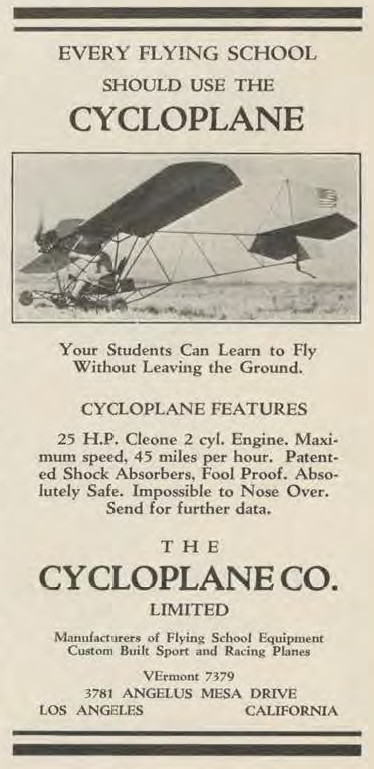 Towards the end of World War One, a new concept appeared in France, the so-called "rouleurs" (literally, "rollers"). The idea was to turn aircraft into non-flyable trainers by either clipping their wings or removing them altogether. Future pilots would perform starting the engine and taxiing, then prepare for flight as if in a real airplane, except the lack of lifting surfaces prevented them from taking off. The system was crude, to say the least, and also dangerous, since the engine power remained the same, and accidents could happen, notably the infamous "nose-over".
Towards the end of World War One, a new concept appeared in France, the so-called "rouleurs" (literally, "rollers"). The idea was to turn aircraft into non-flyable trainers by either clipping their wings or removing them altogether. Future pilots would perform starting the engine and taxiing, then prepare for flight as if in a real airplane, except the lack of lifting surfaces prevented them from taking off. The system was crude, to say the least, and also dangerous, since the engine power remained the same, and accidents could happen, notably the infamous "nose-over".During the 1930s, a new type of "rouleurs" appeared. They were designed as such from the start. Some of them had the features of proper flyers, but not sufficient engine power for takeoff, while others were clunky designs that would never have enabled to fly, even with the proper engines. In England and America, such non-flying machines were frequently called "Penguins", since they were birds who could not fly... The Cycloplane Co. of Los Angeles, which also produced flying types, offered a non-flying model as early as 1930, powered by a 25 hp Cleone engine. While such power was enough to power some actual aircraft, the Cycloplane didn't have sufficient wing area for it to take off.
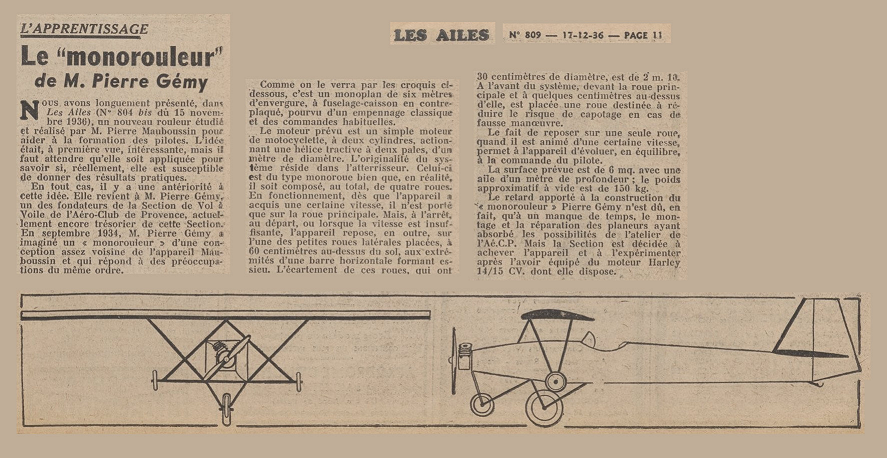 In France, a man named Pierre Gémy was the first to propose such a design in 1934, which he called a "Monorouleur" because it had only one central main wheel with two smaller ones under the wing tips, not touching the ground, reminding one of those little bicycles meant for kids to learn how to ride. Although Gémy's Monorouleur was built, there is no evidence that its 14-hp 2-cylinder Harley engine was ever installed.
In France, a man named Pierre Gémy was the first to propose such a design in 1934, which he called a "Monorouleur" because it had only one central main wheel with two smaller ones under the wing tips, not touching the ground, reminding one of those little bicycles meant for kids to learn how to ride. Although Gémy's Monorouleur was built, there is no evidence that its 14-hp 2-cylinder Harley engine was ever installed.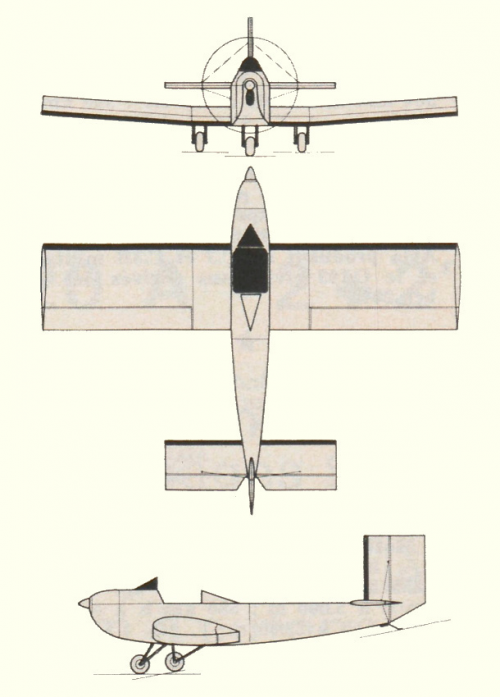 Two years later, Pierre Mauboussin came up with his own "Rouleur", a design which would probably have been flightworthy with enough power, except it used only a 17-hp Aubier & Dunne V2D "Channel" type and was therefore too heavy to fly on such limited power. Mauboussin had previously voiced the fact that he didn't believe in low-cost flying; he also expressed his disapproval of amateur construction, considering it too dangerous; that being said, he conceived his "Rouleur" as a learning tool for both building and flying, which was okay with him since there was little risk for the builder if construction was flawed. His idea was that flying clubs and schools, even individuals, could purchase the plans and detailed documentation and build their own.
Two years later, Pierre Mauboussin came up with his own "Rouleur", a design which would probably have been flightworthy with enough power, except it used only a 17-hp Aubier & Dunne V2D "Channel" type and was therefore too heavy to fly on such limited power. Mauboussin had previously voiced the fact that he didn't believe in low-cost flying; he also expressed his disapproval of amateur construction, considering it too dangerous; that being said, he conceived his "Rouleur" as a learning tool for both building and flying, which was okay with him since there was little risk for the builder if construction was flawed. His idea was that flying clubs and schools, even individuals, could purchase the plans and detailed documentation and build their own.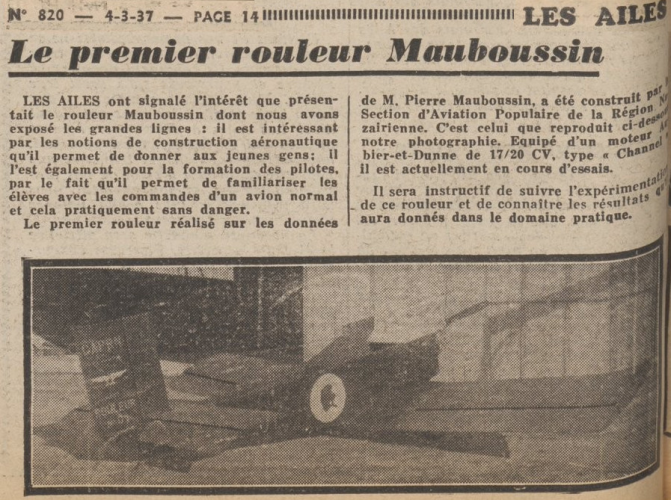 It is widely claimed that a single example was built by Fouga in Aire-sur-l'Adour and exhibited at the 1936 Paris Salon, except there doesn't seem to be any photo or even textual proof to back it up. Most likely, the concept was exposed at the Grand Palais, but in the form of drawings and perhaps a scale model. The first recorded machine (n° 01) was produced by the Section d'Aviation Populaire de la Région Nazairienne, better known as C.A.P.R.N, and came out in January 1937. It is also said that a handful of others were produced in other places, but I haven't been able to find anything about them yet. At any rate, there can't have been more than a dozen in all — probably much less.
It is widely claimed that a single example was built by Fouga in Aire-sur-l'Adour and exhibited at the 1936 Paris Salon, except there doesn't seem to be any photo or even textual proof to back it up. Most likely, the concept was exposed at the Grand Palais, but in the form of drawings and perhaps a scale model. The first recorded machine (n° 01) was produced by the Section d'Aviation Populaire de la Région Nazairienne, better known as C.A.P.R.N, and came out in January 1937. It is also said that a handful of others were produced in other places, but I haven't been able to find anything about them yet. At any rate, there can't have been more than a dozen in all — probably much less.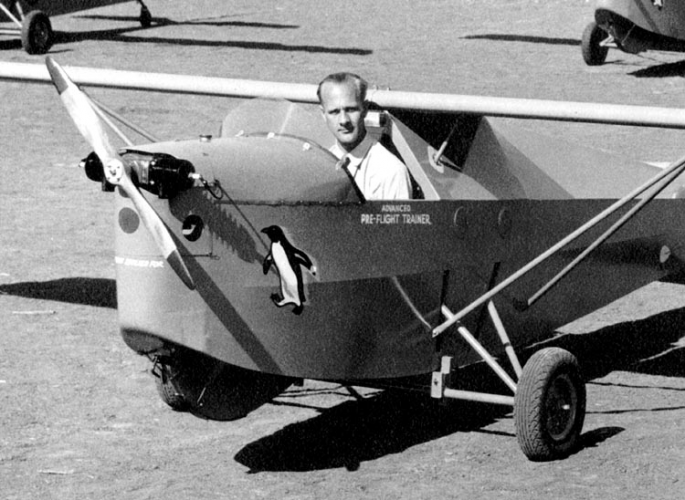 The last known, and ultimate, non-flying aircraft that I could find was Volmer S. Jensen's J-16, aptly called the "Penguin". It was produced by California Aero Glider in 1944, and no less than 250 examples were built, with several produced and delivered to the U. S. Army on an experimental order.
The last known, and ultimate, non-flying aircraft that I could find was Volmer S. Jensen's J-16, aptly called the "Penguin". It was produced by California Aero Glider in 1944, and no less than 250 examples were built, with several produced and delivered to the U. S. Army on an experimental order.I'm sure there were many other types of "Rouleurs" and "Penguins" all over the world! If you know more such types, please share them with us here!


